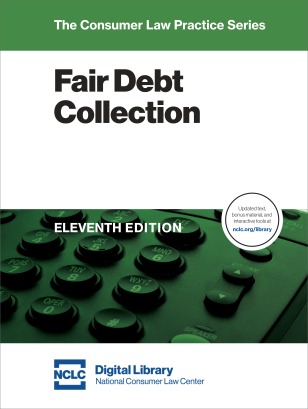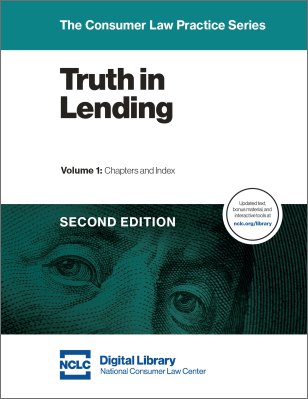What Is at Stake for the Practitioner
A lot has happened since the Fifth Circuit ruled last October that the CFPB’s funding mechanism and by implication all its regulations were unconstitutional. See Community Financial Services Ass’n of America v. Consumer Financial Protection Bureau, 51 F.4th 616 (5th Cir. Oct. 19, 2022) (vacating remaining payment provisions of CFPB’s Payday Lending Rule because CFPB funding violates the Appropriation Clause). This ruling finding the funding mechanism unconstitutional was radical and unprecedented. Equally extreme was the decision that the remedy for the unconstitutional funding mechanism is that a challenged CFPB regulation must be found invalid. This endangers the validity of all CFPB rulemaking to date.
Among other regulations, the Fifth Circuit’s ruling puts at risk CFPB rulemaking under the Fair Debt Collection Practices Act (Reg. F) and the Fair Credit Reporting Act (Reg. V), extensive mortgage-related amendments and other changes to Reg. Z under the Truth in Lending Act, and a new set of rules governing prepaid accounts in Reg. E under the Electronic Funds Transfer Act. Conceivably at risk also are all other CFPB rules that were recodified when the CFPB took over. These risks impact not only consumers but also the financial industry, which counts on the certainty of how laws will be interpreted and safe harbors in those regulations, as explained in an earlier article.
This article surveys recent developments since Community Financial Services was issued, and also recommends best practices in bringing consumer litigation based on a CFPB rule when an industry challenge might be anticipated.
Supreme Court Accepts Certiorari, but Not This Term
The Supreme Court has accepted certiorari in Community Financial Services on the following question: “Whether the court of appeals erred in holding that the statute providing funding to the Consumer Financial Protection Bureau, 12 U.S.C. § 5497, violates the appropriations clause in Article I, Section 9 of the Constitution, and in vacating a regulation promulgated at a time when the Bureau was receiving such funding.” 2023 WL 2227658 (U.S. Feb. 27, 2023). The Community Financial Services Association of America also petitioned for certiorari on other issues in the case unrelated to the funding question, but the Court denied certiorari on those issues. See 2023 WL 2227679 (U.S. Feb. 27, 2023).
Nevertheless, the Court did not agree to fast track the case, and oral argument and briefing will not be heard until the Court’s next term. As a result, a Supreme Court decision is not expected until the Spring of 2024 or even June of 2024.
March 23 Second Circuit Decision Finds CFPB Funding Meets Constitutional Standards
The Fifth Circuit order in Community Financial Services vacated the CFPB’s Payday Lending Rule, but the order has no direct effect on any other CFPB rule. The validity of other CFPB rules will instead be fought out in courts nationwide.
The leading case contrary to the Fifth Circuit ruling in Community Financial Services is now the Second Circuit’s March 23, 2023, decision in Consumer Fin. Prot. Bureau v. L. Offs. of Crystal Moroney, P.C., 2023 WL 2604254 (2d Cir. Mar. 23, 2023). In that case, the CFPB petitioned to enforce a civil investigative demand (CID) against a law firm that advised debt collectors. The firm resisted on the grounds that the CFPB was using unconstitutional funding in its investigation.
The Second Circuit enforced the CID, holding that the CFPB’s funding is constitutional under both the Appropriations Clause and the non-delegation doctrine. The opinion was written by Judge Richard J. Sullivan, who was appointed to the Second Circuit by President Donald Trump, and joined by Judges Amalya L. Kearse (President Jimmy Carter), and John M. Walker, Jr. (President George W. Bush).
The Appropriations Clause provides that “[n]o Money shall be drawn from the Treasury, but in Consequence of Appropriations made by Law.” The Second Circuit cites to Supreme Court precedent to find this simply means that no money can be paid out of the Treasury unless it has been authorized by federal statute. A federal statute specifically authorized the CFPB’s funding structure so there is no constitutional violation.
Moreover, the Second Circuit found the Congress set out with sufficient specificity as to how the CFPB is to be funded. Congress required that the funds remain available until expended to pay the CFPB’s expenses (12 U.S.C. § 5497(c)(1)) and limited the funds to at most 12% of the Federal Reserve’s operating expenses (12 U.S.C. § 5497(a)(2)(A)–(B)). Any additional funding must be via an annual appropriation.
The Second Circuit explicitly rejected the Fifth Circuit’s concern as to the CFPB’s “double insulation from Congress’s purse strings” and found that the Appropriations Clause simply requires that the CFPB’s funding be authorized by statute. Nothing in the Appropriations Clause requires that agency funding be annual or otherwise limited in time or drawn from a particular source. Another clause of the Constitution limits military appropriations to two years in length, but the Constitution does not similarly limit the term of other appropriations.
The Second Circuit also took an originalist approach and explored the intent behind the Appropriations Clause when the Constitution was first proposed and enacted. After reviewing common law existing at the time and writings by Alexander Hamilton, the Second Circuit found that Congress’s intent behind the Appropriations Clause was solely to require that appropriations set out a purpose, a limit, and a fund. The court found these three requirements clearly met as to CFPB funding as spelled out in the CFPB’s authorizing legislation.
The Second Circuit also considered whether the CFPB’s funding structure was proper under the nondelegation doctrine. While there are limits to Congress’ ability to delegate its functions to others, Congress can delegate powers if Congress by statute sets out an “intelligible principle” to which the person or body must conform. Again, the CFPB’s authorizing statute sets out guidelines as to how the funds are to be expended, and thus Congress has plainly provided an intelligible principle to guide the CFPB in setting and spending its budget.
No Decision Has Followed the Fifth Circuit’s Approach
Prior to the Fifth Circuit’s ruling, courts were unanimous that the CFPB funding was constitutional. The en banc DC Circuit and federal district courts in California, Indiana, Maryland, Montana, Pennsylvania, and Rhode Island all held the CFPB’s funding mechanism to be constitutional. See PHH Corp. v. Consumer Fin. Prot. Bureau, 881 F.3d 75 (D.C. Cir. 2018), abrogated on other grounds, Seila Law L.L.C. v. Consumer Fin. Prot. Bureau, ___ U.S. ___, 140 S. Ct. 2183, 2187 (2020); Consumer Fin. Prot. Bureau v. Citizens Bank, N.A., 504 F. Supp. 3d 39, 57 (D.R.I. 2020); Consumer Fin. Prot. Bureau v. Fair Collections & Outsourcing, Inc., 2020 WL 7043847 (D. Md. Nov. 30, 2020); Consumer Fin. Prot. Bureau v. Think Finance L.L.C., 2018 WL 3707911 (D. Mont. Aug. 3, 2018); Consumer Fin. Prot. Bureau v. Navient Corp., 2017 WL 3380530 (M.D. Pa. Aug. 4, 2017); Consumer Fin. Prot. Bureau v. D & D Mktg., 2016 WL 8849698 (C.D. Cal. Nov. 17, 2016); CFPB v. ITT Educ. Servs., Inc., 219 F. Supp. 3d 878 (S.D. Ind. 2015); Consumer Fin. Prot. Bureau v. Morgan Drexel, Inc., 60 F. Supp. 3d 1082 (C.D. Cal. 2014).
Similarly, a WestLaw search finds no court since Community Financial Services that has agreed with that holding. While surprisingly few courts have ruled on the CFPB’s funding since the Fifth Circuit ruling, several cases have explicitly rejected the Fifth Circuit opinion by name and found that there is no Appropriations Clause violation. In addition to the Second Circuit ruling in L. Offs. of Crystal Moroney, see Consumer Fin. Prot. Bureau v. TransUnion, 2022 WL 17082529, at *5 (N.D. Ill. Nov. 18, 2022). See also Consumer Fin. Prot. Bureau v. CashCall, Inc., 2023 WL 2009938, at *3 (C.D. Cal. Feb. 10, 2023) (challenge was untimely, but “even if the Court were to consider Defendants’ belated argument, the Court would need no further briefing on the issue and would follow the line of cases concluding that the CFPB’s funding structure does not violate the separation of powers principles contained in the Appropriations Clause of the U.S. Constitution).”
Additional Reasons the Fifth Circuit Got It Wrong
In addition to the reasoning set out in the Second Circuit decision in Law Offs. of Crystal Moroney, there are other reasons why CFPB’s funding is constitutional. The Appropriations Clause provides that monies cannot be withdrawn from the U.S. Treasury without a congressional appropriation. The Federal Reserve accounts from which the CFPB draws its funding are not part of the U.S. Treasury. See PHH Corp., supra, at 95–96.
Moreover, the CFPB’s funding structure is not unique. The CFPB receives its funding from the Federal Reserve—indeed, it is a bureau of the Fed—which is also outside of the annual appropriations process. Other financial regulators do not receive annual congressional appropriations, including the FDIC, the Comptroller of the Currency (OCC), the National Credit Union Administration (NCUA), and the Federal Housing Finance Agency (FHFA), which have fewer congressional limits on their funding than the CFPB does.
Congress has determined “that the assurance of adequate funding, independent of the Congressional [annual] appropriations process, is absolutely essential to the independent operations of any financial regulator.” Senate Report No. 111-176, at 163 (Apr. 30, 2010). Community Financial Services argued that Federal Reserve funding and thus the CFPB’s funding is not subject to review by congressional appropriations committees. But obviously this applies to the Federal Reserve as much as to the CFPB.
Realizing the implication of its ruling—that all the other financial regulators would also be unconstitutionally funded—Community Financial Services tries to distinguish the CFPB’s funding mechanism from the Federal Reserve’s. The Fifth Circuit pointed to the CFPB’s so-called “double insulation”: Congress does not provide annual appropriations of CFPB funds, and the CFPB receives them from the Federal Reserve, which is also outside the annual appropriations process.
But this is a distinction without a difference, and the Fifth Circuit panel did not explain why this funding flow gave Congress any less control than it has over other non-appropriated funding sources. Indeed, the CFPB is not only funded like the Federal Reserve, but it is the Federal Reserve—i.e., a bureau of the Federal Reserve. In fact, Congress, in funding the CFPB, exercised increased control by directing how the Federal Reserve’s funds are spent and capping how much can go to the CFPB.
Community Financial Services also makes much of the fact that the Federal Reserve, unlike the CFPB, must each year turn over unused funding to the Treasury, while the CFPB can roll those funds over to the next fiscal year. But the ability to roll over unused funds merely reduces the amount of funding that the CFPB must draw from the Federal Reserve the following year—thus allowing the Federal Reserve to send more funds to the Treasury in the next year. Nor does this give Congress any more control over how much the Federal Reserve spends. Moreover, as Law Offices of Crystal Moroney makes abundantly clear, the Constitution does not require that appropriations be for a set term, except for military appropriations.
Community Financial Services also justified its position based on the CFPB’s broad authority, but again the same and more so can be said of the Federal Reserve. Not only does the Federal Reserve have a greater impact on the overall economy, but most CFPB rules were initially promulgated by the Federal Reserve.
Remedy in Community Financial Services Violates Supreme Court Precedent
Even if, against the weight of authority, a court were to hold the CFPB’s funding mechanism unconstitutional, courts should not adopt the Community Financial Services’ radical remedy of invalidating CFPB rules. Even Community Financial Services recognizes that, according to the Supreme Court, to obtain a remedy for what it finds to be the CFPB’s unconstitutional funding mechanism, the party challenging the CFPB’s action “must show that that ‘the unconstitutional …[funding] provision inflicted harm.’” Community Financial Services, supra, at *18 quoting from Collins v. Yellen, 141 S. Ct. 1761, at 1788–1789 (2021).
For starters, the challenger must show that a challenged CFPB regulation was funded through the allegedly unconstitutional funding mechanism. Rule provisions promulgated before 2011 did not use CFPB funding but were promulgated by other federal agencies. In addition, the CFPB received $200 million specifically appropriated by Congress in fiscal years 2010–2014. See 12 U.S.C. § 5497(e)(2). A challenge to a CFPB rule promulgated or amended during those years would need to show that the action was not taken with these appropriated funds.
The challenger also must show more than that the challenger was harmed by a CFPB rule promulgated using the challenged funding. The challenger must show that the specific funding mechanism itself harmed the challenger—that the injury would not been suffered if funding had been provided through annual appropriations instead. But certainly Congress, if the CFPB funding structure was unconstitutional, would have funded the CFPB another way to allow it to promulgate and amend its regulations. Congress explicitly moved rulemaking authority from other agencies to the CFPB and gave the CFPB the authority it used in promulgating rules. There is no evidentiary basis to show that Congress would not have provided the funding needed.
How to Avoid Stays of Pending Litigation Until the Supreme Court Rules
While courts consistently uphold the CFPB’s funding mechanism, there is a risk that a court, faced with a challenge to the CFPB’s funding, will stay litigation based on a CFPB rule until the Supreme Court decides the issue, rather than a trial court making its own judgment. See Consumer Fin. Prot. Bureau v. MoneyGram Int'l, Inc., 2022 WL 17547438, at *3 (S.D.N.Y. Dec. 9, 2022).
Consumer practitioners can avoid their litigation being stayed by bringing actions not based on CFPB rules but based on the underlying statute. Any ruling on the CFPB’s funding has no impact on the viability of the underlying statute. Citations to CFPB rules and CFPB analysis underpinning a rule can explain what the statute itself requires, as opposed to being the basis for a consumer’s claim.
Citing to both the rule and the statute should prevent staying of the litigation pending a Supreme Court ruling. For example, CFPB Reg. F, 12 C.F.R. § 1006.14(h) prohibits debt collectors from contacting a consumer if the consumer has requested that the collector not contact the consumer in that manner. Even if Reg. F were invalidated, the same conduct would still be a violation of a related Fair Debt Collection Practices Act (FDCPA) provision, 15 U.S.C. § 1692d, that prohibits conduct that harasses, oppresses, or abuses a consumer.
Moreover, many CFPB rule provisions were enacted without the use of CFPB funding. With few exceptions, the CFPB’s current rules were transferred wholesale from other agencies (most commonly the Federal Reserve) to the CFPB when the CFPB’s doors opened in 2011. While changes to those rules since 2011 were promulgated using CFPB funding, the CFPB’s funding structure had nothing to do with rules that were adopted before then.
The Special Case of the CFPB’s UDAAP Authority
A court faced with a challenge as to the CFPB’s funding might stay a CFPB enforcement action brought using CFPB statutory authority over unfair, deceptive, or abusive acts of practices (UDAAP). See Consumer Fin. Prot. Bureau v. MoneyGram Int'l, Inc., 2022 WL 17547438, at *3 (S.D.N.Y. Dec. 9, 2022).
Nevertheless, CFPB funding has no bearing on a case brought under the statutory UDAAP provision by a state attorney general or financial regulator. The state enforcement action is not utilizing CFPB funding. Instead, it is taking advantage of a statutory remedy to address UDAAP violations.
There is no private right of action to enforce the CFPB statute’s UDAAP standard, but private litigants in every state have a private right of action under a state deceptive practices (UDAP) statute. See NCLC’s Unfair and Deceptive Acts and Practices. Many violations of conduct that has been found to violate the federal UDAAP ban may independently be viewed as state UDAP violations. Other state statutory claims may also be an alternative to claims to a CFPB rule, avoiding any question of a stay of the litigation.
Responding to Defendants’ Late Attempts to Raise the Appropriations Clause Question
As consumer law cases based on CFPB rules go up on appeal, there is a risk that defendants for the first time will raise the CFPB funding issue either on appeal or when the case is remanded back to the trial court. Nevertheless, courts should not consider the funding issue if it was never raised in the case below. See Consumer Fin. Prot. Bureau v. CashCall, Inc., 2023 WL 2009938, at *2 (C.D. Cal. Feb. 10, 2023). See also Consumer Fin. Prot. Bureau v. CashCall, Inc., 35 F.4th 734, 743 (9th Cir. 2022). But cf. Consumer Fin. Prot. Bureau v. Nationwide Biweekly Admin., Inc., 2023 WL 566112, at *2 (9th Cir. Jan. 27, 2023) (on remand court should consider CFPB funding question; unclear whether that issue or only other constitutional issues had been raised in the case below).
The Community Financial Services decision does not justify failing to raise the issue previously. As explained by the court in Consumer Fin. Prot. Bureau v. CashCall, Inc., 2023 WL 2009938, at *3 (C.D. Cal. Feb. 10, 2023), the Fifth Circuit ruling did not deal with a novel question. The question as to the CFPB’s funding has been raised in litigation as early as 2014, and in numerous cases prior to the Fifth Circuit ruling.
Moreover, a challenge based on the CFPB’s funding is not a jurisdictional issue that could be raised at any time. Instead, the challenge goes to the CFPB’s authority, not that of the court to hear the matter. See Consumer Fin. Prot. Bureau v. CashCall, Inc., 2023 WL 2009938, at *2 (C.D. Cal. Feb. 10, 2023).
Final Advice
Please let us know if you see CFPB funding challenges in your private litigation. We are trying to keep track of these challenges. Please contact [email protected].



